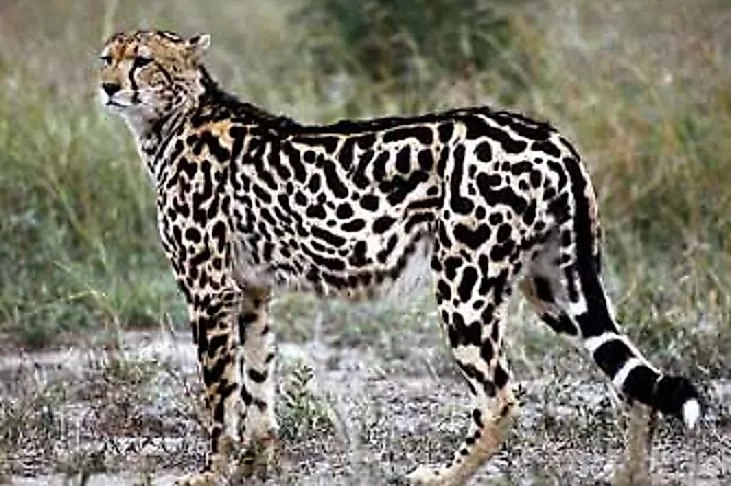Threatened Mammals Of Libya

Libya is a North African country that covers an area of approximately 700,000 square miles. The nation has a 1,100-mile long coastline along the Mediterranean Sea which lends a Mediterranean climate to its northern regions. In other areas, Libya is characterized by the Libyan Desert. This desert contributes to the extremely hot and arid climate experienced in the majority of the country. This climate and its ecosystem influence the flora and fauna living in this country. Due to several environmental threats, many species here have been classified as threatened, endangered, or extinct. This article takes a look at some of the mammals that were once commonplace throughout Libya.
Threatened Mammals of Libya
Barbary Lion
The Barbary lion is now considered to be extinct in the wild. It was once used to fight gladiators in the Roman Colosseum. This wild feline first suffered population losses in the mid-1800’s when humans began hunting it for rewards. It was prized for its long mane, which extended over the shoulders and to the stomach. Additionally, the Barbary lion was a popular hotel and circus attraction. Considered one of the biggest lion species, it grew to between 7 feet, 9 inches and 9 feet, 2 inches in length. The Barbary lion weighed between 600 and 660 pounds. They were extinct along the coast by the mid-1800’s. The last sightings in the wild occurred in Morocco and Algeria around the 1950’s. Most of the lions in American and European zoos are thought to be descendants of the Barbary lion and in June of 2016, DNA testing confirmed 2 female Barbary lions born on the Big Cat Rescue area of Wisconsin in the US.
Scimitar Oryx
Another mammal that once roamed the nation of Libya is the Scimitar oryx, an antelope species. The oryx stands at 3.3 feet and weighs between 310 and 460 pounds. It is characterized by its white coloring with reddish-brown chest and spiral horns. Now extinct in the wild, this antelope once formed herds of up to 70 animals. Its population decline began as a result of over-hunting, prized for its long horns and unique hide. They became extremely important as a human food supply during the Civil War of Chad during the 1960’s. Climate change also contributed to their extinction. Although adapted to life in the desert, increasingly hot temperatures and long droughts resulted in a lack of food, gradually killing off the remaining few wild Scimitar oryx. Today, captive breeding programs are aiming to increase the population and reintroduce them to the wild.
Northwest African Cheetah
The Northwest African cheetah, also referred to as the Saharan cheetah, is considered critically endangered. Researchers suggest there is still a population of around 250 adults in the wild, throughout the Sahara Desert. This cheetah species appears lighter, almost white, in color than other cheetahs. It has black spots on its back that fade into brown and light brown on its legs. To deal with the extreme temperatures in the desert, this species is nocturnal which allows it to conserve water. Rather than relying on water sources for hydration, the Northwest African cheetah is able to obtain water from the blood of its prey, typically antelopes and sometimes hares.
Other threatened mammal species can be found in the chart below.
Increasing Extinction Rates
Habitat loss, invasive species, and global climate change have threatened biodiversity all over the world, including Libya. Over the last several decades, mammals have been seen going extinct at a faster rate than ever before. The natural rate is typically around 1 to 5 species annually, but we are now losing between 1,000 and 10,000 times that rate. This mass extinction is the direct result of human interference and unless something is done to reverse this pattern, earth will be left with little to no biodiversity.
Threatened Mammals Of Libya
| Threatened Mammals of Libya | Scientific Name |
|---|---|
| Barbary Lion | Panthera leo leo |
| Scimitar Oryx | Oryx dammah |
| Northwest African Cheetah Sudan Cheetah | Acinonyx jubatus hecki Acinonyx jubatus soemmeringii |
| Mediterranean Monk Seal | Monachus monachus |
| Dama Gazelle | Gazella dama |
| Addax | Addax nasomaculatus |
| Barbary Macaque | Macaca sylvanus |
| Mehely's Horseshoe Bat | Rhinolophus mehelyi |
| Dorcas Gazelle | Gazella dorcas |
| Barbary Sheep | Ammotragus lervia |











